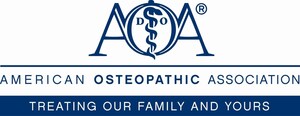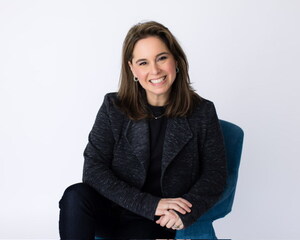Talking About Sex Early and Often in Their Child's Life Can Ease Parents' Nerves
LAS VEGAS, Oct. 2, 2013 /PRNewswire-USNewswire/ -- Having "the talk" might be an uncomfortable conversation for both parents and teens. However, sharing small doses of information about sex frequently with their child throughout his or her childhood can make the topic more manageable for parents.
Jacqueline M. Kaari, DO, an AOA board-certified pediatrician, discussed how parents can overcome the challenges of sharing with their children age-appropriate information about sex during the American Osteopathic Association's (AOA) OMED 2013, the Osteopathic Medical Conference & Exposition in Las Vegas.
"It is perfectly normal for parents to acknowledge any discomfort they are feeling during this discussion and to admit to their child that they don't have all the answers," says Dr. Kaari. "The important thing is for parents to communicate accurate information, establish a clear set of values and welcome any questions their child has about sex."
As for what age parents should broach the topic, Dr. Kaari encourages parents to start during infancy by using the correct terms for body parts. The conversation then will evolve as children get older and begin to realize there is a difference between boys and girls as well as notice changes in their own bodies.
"I tell parents to communicate with their children early and often about sex. By making it a lifelong discussion, parents don't have to have one big talk later," Dr. Kaari says. "Effective communication is worth the time investment to avoid any confusion or misinformation about sex if children are uninformed."
If teens are uncomfortable talking to their parents about sex, Dr. Kaari suggests they write down their questions and pick an appropriate time to share them. Another option is for teens to share their questions or concerns with a physician during their annual physical examination.
About the American Osteopathic Association
The American Osteopathic Association (AOA) proudly represents its professional family of more than 104,000 osteopathic physicians (DOs) and osteopathic medical students; promotes public health; encourages scientific research; serves as the primary certifying body for DOs; is the accrediting agency for osteopathic medical schools; and has federal authority to accredit hospitals and other health care facilities. More information on DOs/osteopathic medicine can be found at www.osteopathic.org.
SOURCE American Osteopathic Association
WANT YOUR COMPANY'S NEWS FEATURED ON PRNEWSWIRE.COM?
Newsrooms &
Influencers
Digital Media
Outlets
Journalists
Opted In





Share this article